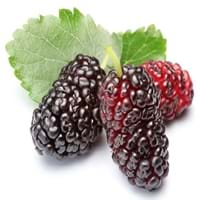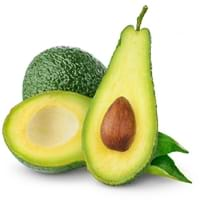Health Benefits
Anti-aging benefits, Boosts immune system, Cancer prevention, Flu treatment, Hair care, Heart care, Improves eye vision, Increases metabolic rate, Kidney stone treatment, Maintains healthy cholesterol level, Skin cleansing, Skin rejuvenation, Treatment of common cold, Treatment of skin Diseases
Cancer prevention, Natural detoxification, Osteoporosis prevention, Protection from chronic disease
General Benefits
Boosts immune system, Controls blood sugar levels, Flu treatment, Improves eye vision, Maintains healthy cholesterol level, Treatment of common cold
Boosts immune system, Controls blood pressure, Digestive aid, Improves eye vision, Maintains healthy cholesterol level
Skin Benefits
Anti-aging benefits, Skin cleansing, Treatment of skin diseases
Brightens and lightens complexion, Reduces wrinkles, Skin cleansing, Treatment of dark spots
Hair Benefits
Protects hair, Regulates hair growth
Acts as moisturizer, Good conditioner, Protects hair, Regulates hair growth, Rejuvenates scalp, Remedy for split ends, Shiny hair, Softening mask
Allergy Symptoms
Breathing difficulty, Itching, Nasal congestion, Redness of eyes, Runny nose, Sneezing
Abdominal pains, Anaphylaxis, Inflammation, Itching, Latex Allergy, Nasal congestion, Skin Rashes, Swallowing difficulties, Swelling, Upset stomach, Vomiting, Wheezing
Side Effects
Decrease in blood sugar levels, Allergic reaction
Allergic reaction, Hypersensitivity, Weight gain
Best Time to Eat
Best if taken as a breakfast (or empty stomach), As a snack in the late afternoon, Don't consume at night and before bed, Eat the fresh ones, avoid mixing with any other foods, don't eat after meal., Morning time (before lunch)
Along with meal, As a snack in the late afternoon, Don't consume at night and before bed, Don't eat after meal
Vitamin B5 (Pantothenic Acid)
Not Available
Vitamin C (Ascorbic Acid)
Vitamin K (Phyllochinone)
Phytosterol
Not Available
Calories in Fresh Fruit with Peel
Calories in Fresh Fruit without Peel
Not Available
Not Available
Calories in Canned Form
Not Available
Not Available
Type
Berry
Berry, Tree fruit, Tropical
Season
Spring, Summer
Summer
Varieties
Charparral, Pendula, Teas, Bellaire and Lingan
Bacon, Fuerte, Gwen, Hass, Lamb Hass, Pinkerton, Reed and Zutano
Color
Pink, Purple, White
Dark green
Origin
China
Mexico, Central America
Soil Type
Clay, Loam
Decomposed Granite, Limestone, Sandy loam, Well-aerated
Climatic Conditions
Sunny
Humid, Without frosts
Facts about
- It can take up to 10 years for a tree to produce mulberry fruit.
- Mulberry leaves are fed to silkworms to enhance silk production.
- In Germany, they say that devil uses root of mulberry tree to polish his boots.
- The oldest living avocado tree is found in University of California and was planted in 1879.
- Avocados can be swapped for butter in Baked Goods Recipes.
- Avocado ripens more quickly with a banana or an apple around.
Top Producer
China
Mexico
Other Countries
Colombia, Egypt, India, Indonesia, Kenya, Mexico, Pakistan, Peru, Russia, United States of America
Chile, China, Colombia, Dominican Republic, Indonesia, Kenya, Mexico, Peru, Rwanda, United States of America
Top Importer
Not Available
United States of America
Top Exporter
China
Mexico
Botanical Name
Morus Alba
Persea Americana
Synonym
Morus atropurpurea or Morus multicaulis
Persea Gratissima
Subkingdom
Tracheobionta
Tracheobionta
Division
Magnoliophyta
Magnoliophyta
Class
Magnoliopsida
Magnoliopsida
Subclass
Alismidae
Magnollidae
Family
Moraceae
Lauraceae
Species
M. alba
P. Americana
Generic Group
Mulberry
Laurel
Difference Between Mulberry and Avocado
We might think that Mulberry and Avocado are similar with respect to nutritional value and health benefits. But the nutrient content of both fruits is different. Mulberry and Avocado Facts such as their taste, shape, color, and size are also distinct. The difference between Mulberry and Avocado is explained here.
The amount of calories in 100 gm of fresh Mulberry and Avocado with peel is 43.00 kcal and 160.00 kcal and the amount of calories without peel is Not Available and Not Available respectively. Thus, Mulberry and Avocado belong to Low Calorie Fruits and High Calorie Fruits category.These fruits might or might not differ with respect to their scientific classification. The order of Mulberry and Avocado is Rosales and Laurales respectively. Mulberry belongs to Moraceae family and Avocado belongs to Lauraceae family. Mulberry belongs to Morus genus of M. alba species and Avocado belongs to Persea genus of P. Americana species. Beings plants, both fruits belong to Plantae Kingdom.









